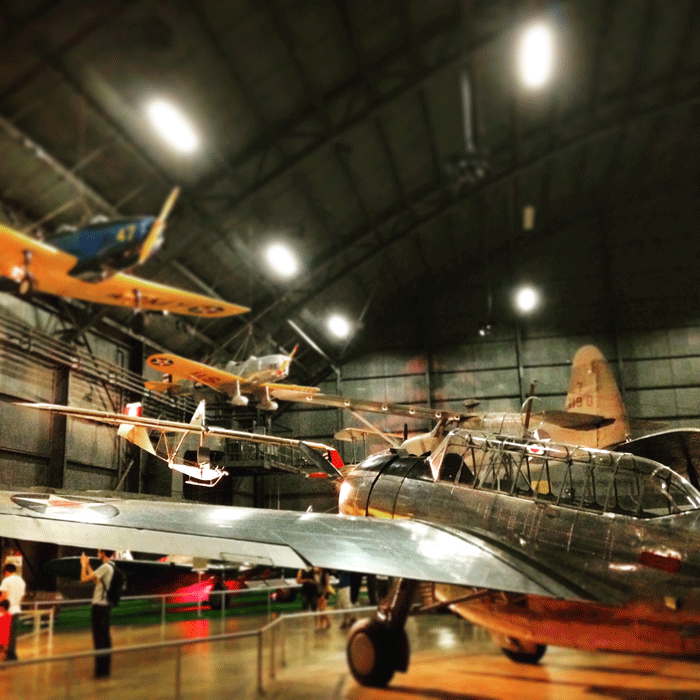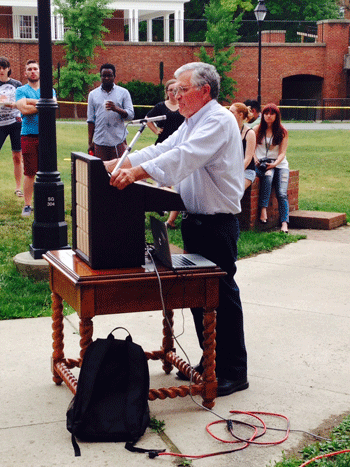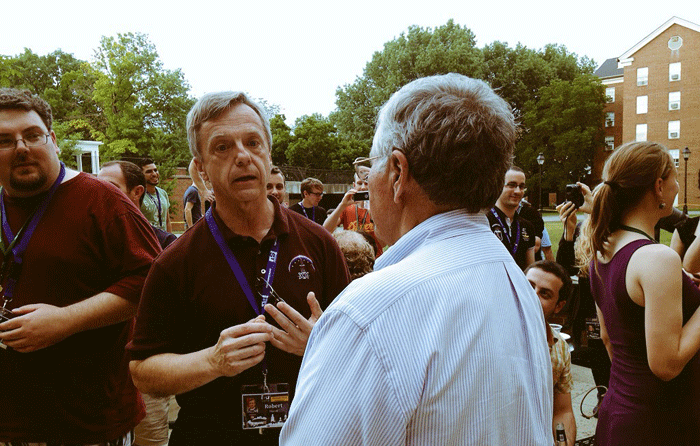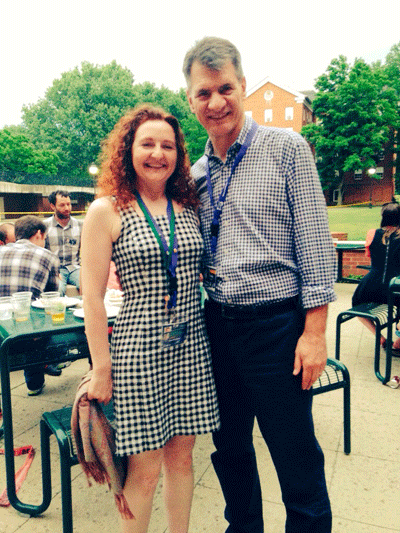Sunday June 21, 15
Hello again from Ohio,
Weather this week has been CRAZY- thunder storms, power shortages. It’s getting quite humid here this time of year, but from speaking to the locals, it seems that this isn’t your average Ohio summer – it must the influx of all these great Space enthusiasts, bringing all their rain with them maybe!! The great thing about the rain though is, that it’s really warm, so even if you get caught in the middle of a shower, you dry off in minutes, and it’s actually quite refreshing in comparison to the cold rain back home.
Anyway, back to all things Space at Space Studies Programme. Well the excitement continued this week (find out all from week one here). It began with a field trip to the National Museum of the US Air Force, in Dayton – about a 2 hour coach trip from where we are. If you’re ever in this state, it really is worth a visit. The museum is situated on the actual US Air Force base & with about 3 hangars housing easily about 300 different aircraft dating from 1902 (the Wright brothers’ first glider) right up to the bat-winger B2 spirit. There are so many planes, you almost can’t really absorb it all. For aviation enthusiasts though, this would be nirvana, and some of the participants who are fighter pilots or in the Navy really enjoyed this excursion. So we all followed them around, as they each gave us their own personal tour of the facility.

But regardless of whether you love planes or not, the absolute treasure for us all was the Apollo 15 command module, tucked away at the back of the exhibition. This command module went all the way to the moon & back in 1971, containing 3 NASA astronauts- David R. Scott, Al Worden and James Irwin. When you’re up this close to it, it’s really hard to imagine that this little spacecraft flew them all the way there, 385,000km away & then back home- an incredible feat of engineering.
Splashdown is a term used to describe the method of landing a spacecraft by parachute in a body of water- it’s how the NASA Apollo astronauts would have returned back to earth at the end of their missions and future Orion missions will probably adopt the same method. And so on Tuesday evening at SSP, in advance of the annual SSP Astronaut Panel event, we had a ‘Splashdown Party’ to welcome the arrival of the astronauts coming to town. We were especially graced with space royalty when NASA astronaut and geologist Harrison ‘Jack’ Schmitt, from the Apollo 17 mission to the moon came to meet us. This last Apollo mission to the moon for the United States broke several records set by previous flights and includes: longest manned lunar landing flight (301 hours, 51 minutes); longest lunar surface extravehicular activities (22 hours, 4 minutes); largest lunar sample return (an estimated 115 Kg, 249 lbs); and longest time in lunar orbit (147 hours, 48 minutes). Apollo 17 ended with a splashdown in the Pacific Ocean approximately 0.4 mile from the target point. I was completely star-struck in the presence of Jack Schmitt & I couldn’t even speak to him, let alone ask him for a picture. What do you say to an Apollo astronaut, a man that’s actually been on the Moon, and travelled 385,000km away from Earth to get there? For those braver than me who did approach him, he patiently stood & met everyone, and we would have kept him there all night, but he’s 80 years old now and so he slipped quietly away shortly before 9.30pm.

But not that we noticed, because the astronauts continued to arrive- ESA’s Italian Astronaut Paolo Nespoli South Korea’s Yi So-yeon, and Canadian Space Agency’s Bob Thirsk joined us for the evening and for the following day too. Yi So-yeon was chosen from 38,000 applicants to fly on a sponsored 11-day mission to ISS by South Korea in 2008, who paid the Russian Space agency €20million for the privilege. She spoke with us Thursday evening about her experiences, especially about her eventful re-entry on the Soyuz capsule along with ISS crew members Peggy Whitson and Yuri Malenchenko aboard Soyuz TMA-11, on April 19, 2008, when due to a malfunction with the Soyuz vehicle, the craft followed a ballistic re-entry which subjected the crew to severe gravitational forces up to 10 times the amount experienced on Earth. It was a very critical situation and strong decisions needed to be made in split seconds. Thankfully, they made the right ones and all three survived. But her story was deeply human and a reminder to us all of the risks of spaceflight and how fragile we humans are in these extreme conditions.

Paolo & Bob generously allowed me to interview them about their missions on the International Space Station. Both of them told me that the biggest struggle for them wasn’t the microgravity, or the galactic cosmic rays, or the preparation and planning of EVAs (Extra vehicular activity, also known as Space Walks), but something a lot closer to home. Their biggest struggle was missing family, something we can all relate to. Worrying for their families, making sure that they’re okay. The instincts of parenting to protect and provide were ever present in their minds while aboard the ISS and without the opportunity to undertake this commitment due to their absence was very difficult for both of them.

I asked them both to describe the moment when they saw the Earth for the very first time. They were both so engrossed in their tasks in that moment, and had prepared so much for everything but the one thing that they hadn’t imagined was the experience of seeing the Earth for the very first time. The experience is overwhelming for many of astronauts, so much so, they’ve coined a term ‘The Overview Effect’ to describe it. Bob told me that he would take every chance he could to head to the cupola, to view the Earth and regrets that he didn’t do it more. Paolo, a keen photographer, who captured the best images of the ISS from his first mission on the Space Shuttle, told me the same. Their perception of the planet altered during their mission- initially the Earth just looked like a blob of blue, but the longer they observed it, the more they could see- first they could see clouds, then countries. And then cities. Like New York, or London or Dublin. And then rivers, the Pyramids of Egypt, the Great Wall of China. And then fires in the Amazon rainforest, diminishing polar icecaps, and oil spills in our vast oceans. In the acclimation off-Earth, Paolo said he had to learn a whole new set of skills to be extra-terrestrial during those months in microgravity on the ISS. Both felt very privileged to have had the opportunity – Bob told me that his time aboard the ISS transformed his perspective of Earth. What he said, resonated with me and is probably best described in Carl Sagan’s book, ‘Pale Blue Dot’-
Earth is a tiny, fragile, ball of Life, a Living, breathing, moving thing, shielded & nourished by a paper-thin atmosphere. From Space, boundaries vanish and the conflicts that divide people become less important. And the need to create a planetary society to protect our ‘Pale Blue Dot’ becomes both obvious and imperative.
I think its time we all shared that view, don’t you?
Now, I’m off to study for a mid-term test in the morning. Have a great week everyone and I’ll be back next week with more tales of awesomeness.
Niamh
Featured Image: Me beside Apollo 15 Command Module that landed on the Moon in 1971 (Credit: Remco Timmersmans).
